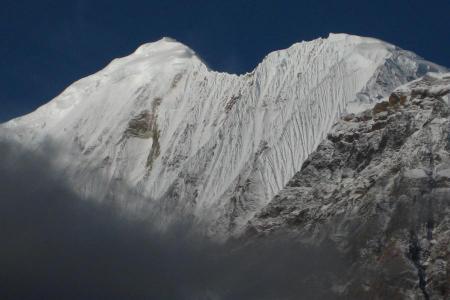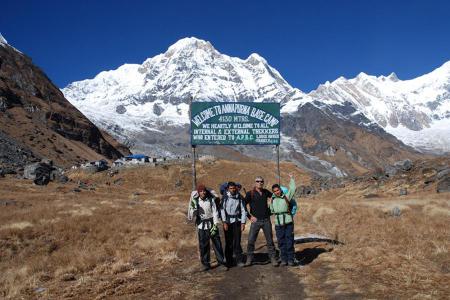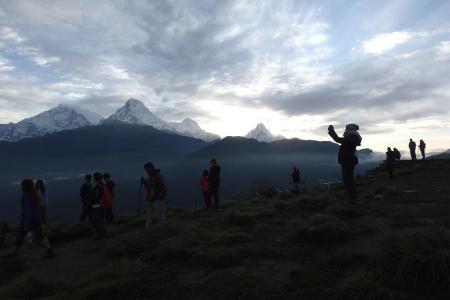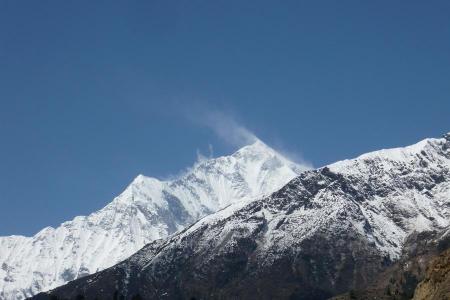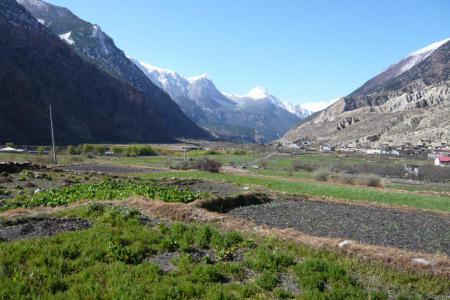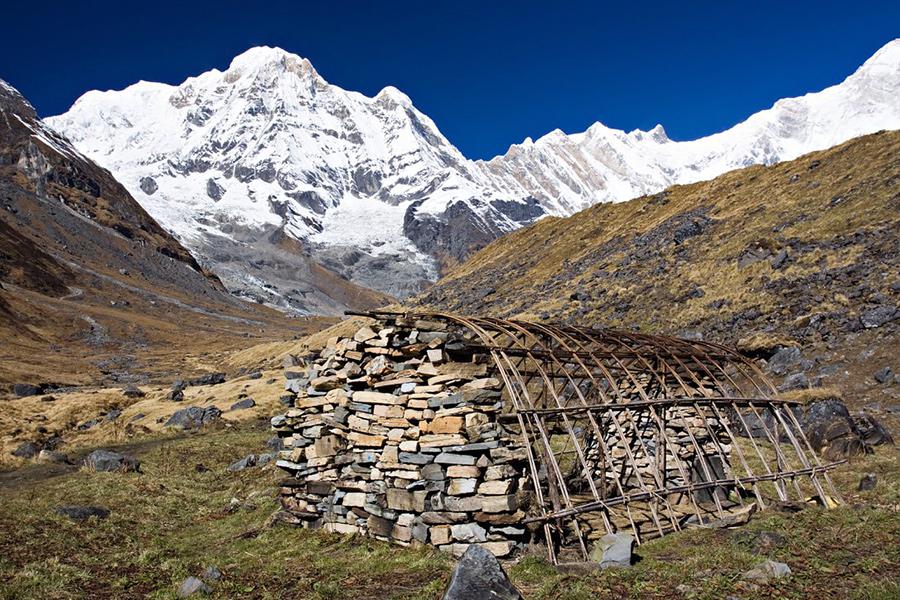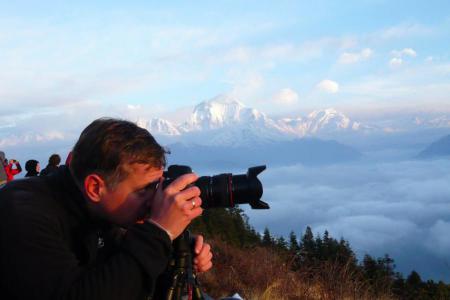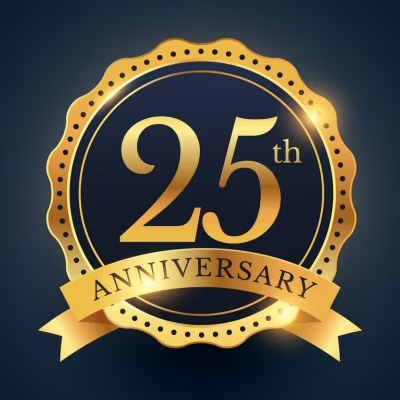Annapurna Base Camp Trek 11 Days
Overview
Annapurna Base Camp Trekking - 11 Days
Annapurna Base Camp trek is a dramatic amphitheater of mind blowing peaks & glistening glaciers…
Annapurna Base Camp trek takes you to the base of the 10th highest peak in the world. This famous trek rivals the Everest base camp in Nepal. But the altitude shouldn’t worry you as the Everest BC does. Our 11 days Annapurna Base Camp trek difficulty is rather easy on your body. However, we do have some altitude to deal with on the way. On the other hand, the shorter journey passes through exciting mixed terrain, offering you some wonderful cultural and wildlife experiences. The green landscape keeps you happy throughout. Above all, you’re in regular view of the world’s tallest mountains-Annapurna I (8091m) and Dhaulagiri I at (8167m). The highest we go on this trip is up to 4130m at base camp. Most importantly, Annapurna base camp altitude gives us awesome rewards of rich beauty for going this far. You will love this gripping trip, for sure!
Mt. Annapurna is the first 8000m peak to experience summit in June of 1950. This famous story is a write-up by the bold mountaineer Maurice Herzog. Certainly, the exploits of that epic time is why we enjoy this trek today. We hike through scenic greenery, towering mountains covered in white snow and blooming forests of rhododendron. Additionally, the friendly picturesque villages amid splendid landscapes leave us breathless. In other words, this is what the Annapurna Base Camp trek experience is all about. You will enjoy interacting with the local people for instance, and learn of their cultures. We sooner than later discover why this venture is one of the most popular on earth. Moreover, we reach our destination via Mt. Machhapuchhre (Fishtail) which locals respect for its outstanding beauty.
We know you've been eager to hit familiar trails and reconnect with nature in these trying times. Simply trek at your own pace while you practice social distancing. Exploring the outdoors is our passion; we want it to be yours, too. For trekkers with time looking for a thriller, you may try our ‘Annapurna Base Camp with awesome Poonhill – 15 days’’. It could be a decision you’d highly appreciate. We guarantee our safety preparations from the Covid-19 virus. Your absolute safety is our topmost priority in these uncertain times.
Star Highlights:
-
Views of the world’s highest mountains: Dhaulagiri I (7th) and Annapurna I (10th)
-
Soak yourself into mountain culture lifestyles as you walk through Gurung Villages while interacting with the locals on the trails.
-
Enjoy an exciting overnight at the Annapurna Base Camp close-up to the giants of the region and the world at length. Its stunning to behold on a moonlit night, an experience never to be forgotten
-
Relish a natural bath at the hot springs in Jhinu. Your sore body would welcome a little pampering after some tough hiking.
Trip Factors:
Trip Length: 11 Days
Grade: Moderate Trek…as we hike through highly scenic territory where the sounds of birds in the air and the gentle cascading of waterfalls beat with our hearts…
Trek Duration: 09 days on trails that begins at the base of the huge Annapurna Mountains where nature displays before us the true essence of beauty…
Starts In: Kathmandu
Ends In: Kathmandu
Trek Type: TH
Accommodation: Hotel and teahouse lodges
Meals: Healthy meals provided on the trails
Transportation: Private car or a tourist coach depending on the number of people
Maximum Altitude: 4131m…we summit at the Annapurna Base Camp close by to the towering Annapurna and the mighty Dhaulagiri…
Would you reckon this trek is for you? Check it out…
This is a there-and-back trek to the stirring Annapurna Base Camp, Nepal’s second most popular trek after Everest Base Camp, or so they say. Some veteran hikers say its even better than the Everest BC. From Annapurna Base Camp (12,795 feet / 3,900 m), you'll wake up to truly once-in-a-lifetime views. The trek begins at Phedi, after a short drive from Pokhara, and passes through Gurung villages, rhododendron forests, and stunning river valleys set against the backdrop of the Annapurna and Dhaulagiri peaks.
This adventure involves trekking for up to 6 or 7 hours a day at a steady pace that’s comfortable to your body. A venture like this may spend successive days at altitudes not generally exceeding 4,500m and are usually between 10 and 15 days in duration. You will need a good level of fitness and must be in good health. One good form of recommended preparation is: 45 minutes of aerobic type exercise, three to five times a week for at least three months leading up to your trip. Hill walking with a pack in unpredictable weather conditions or road cycling is also recommended depending upon the activity you plan to undertake. A mix of all this will be good to do 5 times a week with a 2 days break on Saturdays and Sundays to rest the body. The Annapurna Base Camp trek is not as strenuous as the Everest Base Camp would be, this is an adventurous outing you’re sure to enjoy.
11 days Annapurna Base Camp Trek Outline Itinerary
Day 01 : Arrive in Kathmandu (1300m/4264ft)
Day 02 : Fly Pokhara (823m/2,700ft) and Trek to Ghandruk (1940m/6360 ft): 6 hrs treks
Day 03 : Trek Ghandruk to Chhomrong (2170m/7120ft): 5 hrs trek
Day 04 : Chhomrong to Dovan (2580m/8460ft): 6 hrs trek
Day 05 : Doban to Deurali (3230m.): 4 hours walk
Day 06 : Deurali to Machhapuchhre Base Camp (3700m/12135ft): 3 - 4 hrs trek
Day 07 : Machhapuchhre Base Camp to Annapurna Base Camp (4,131m/13,545ft): 2/3 hrs walk
Day 08 : Trek back to Bamboo (2310m/7575ft): 6 hours walk
Day 09 : Bamboo to Jhinu Dada (1760m/5770 ft): 6 hrs trek
Day 10 : Jhinu Dada to Naya Pul to Pokhara to Kathmandu: 6 hours walk, one hour drive & 25 minutes flight
Day 11 : Final Departure
Vital information relevant to this venture:
PARTICIPATING in a GROUP TRIP
TRAVELLERS who prefer going SOLO:
TRAVEL INSURANCE
OUR COST VERSUS the EXPERIENCE
ACCOMMODATIONS
YOUR MEALS
ALCOHOL & CAFFEINE:
TREK LEADERS/GUIDES & OTHER STAFFS
- Intensive Wilderness First Aid
- Trekking Guide Training [Government recognized]
- Eco Trekking Workshop and Adventure Meet
- English Language
- Conservation and Biodiversity
- Rock climbing, Ice Climbing and Mountaineering (for expedition leaders)
- To meet Unique Adventure’s mountain crew, check out the Guide Profile Page.
CARE FOR PORTERS & STAFFS
PROTECTING THE ENVIRONMENT
FITNESS & TRAINING
SUGGESTED EXERCISE PLANS FOR TREKKING TRIPS
ACCLIMATIZATION
VACCINATIONS & YOUR HEALTH
YOUR PACK LIST
ESSENTIAL TREKKING EQUIPMENT
- Trekking boots (broken in)
- Gaiters (for winter departures Dec-Feb only - can be hired in Kathmandu if required)
- Waterproof 3/4 season jacket and trousers (can be hired/purchased in Kathmandu if required)
- Camp footwear (i.e. sneakers, thongs or booties)
- Several pairs of high quality hiking socks
- T-Shirts - highly recommended are synthetic t-shirt styles that absorb away moisture
- Thermal underwear/layers
- Down jacket (can be hired/purchased in Kathmandu if required, available with Unique Adventure)
- Warm mid layers (fleece/micro fibre)
- Trousers - lightweight, loose fitting, trekking trousers (can be purchased in Kathmandu)
- Shorts or skirt for summer
- Tracksuit or fleece pants for evenings when it turns chilly
- Sleeveless fleece and extra layers for winter departures (Dec-Feb)
- Warm hat & sun hat
- Scarf/neck warmer
- Gloves and mitts - waterproof and warm.
- Sunglasses with UV protection
- Head torch (with spare batteries)
- Sunscreen and lip balm
- Light weight towel or sarong
- Personal first aid kit
- Biodegradable wet wipes/toilet paper
- Hand sanitizer gel
- Trail mix/nuts/muesli bars (bring zip lock bags from home)
OPTIONAL GEAR [useful on the trails]
- Pocket knife
- Insect repellent
- Ear plugs
- Walking poles
- Extra zip lock bags
- Hot water bottle (winter months)
SLEEPING BAG & INNER SHEET
WATER BOTTLES
- Purification tablets available from camping stores or pharmacies e.g. Micropur.
- 2% tincture of iodine, available from pharmacies, used at 4 drops per litre of water and left for at least 20 minutes - longer in very cold weather.
MEDICAL [this is important]
- Small, personal first-aid kit. (Simple and light)
- Aspirin, first-aid tape, and plasters (Band-Aids)
- 1 skin-blister repair kit
- Anti-diarrhea pills
- Anti-headache pills
- Cough and/or cold medicine
- Anti-altitude sickness pills: Diamox or Acetylzolamide
- Stomach antibiotic: Ciprofloxacin, etc. Do not bring sleeping pills as they are a respiratory depressant.
- Water purification tablets or water filter
- 1 set of earplugs
- Extra pair of prescription glasses, contact lens supplies
CASH:
TIPPING [an expectation on such risky arduous trips]
- Tour Leader: Rs 30,000 - 35,000 (usually tipped on the last night in Kathmandu)
- Your trekking crew (tips are usually given on the last evening of the trek in Pokhara or Kathmandu):
- Head Trekking Guide and Assistant Guides: Rs 20,000 - 25,000 for each guide
- Trek Porters/yak men: Rs 10,000 for each porter or yak man
ACUTE MOUNTAIN SICKNESS (AMS)
- Headache
- Tiredness
- Disturbed sleep patterns
- Loss of appetite/nausea
- Shortness of breath
- Cough
- Palpitation
- Swelling of the hands and face
Itinerary Details
Your detailed Itinerary to show you the way:
Day 01: Arrive in Kathmandu (1300m/4429ft)
If it’s a clear day when you are flying into Kathmandu, then your tour begins right from the skies itself. The sights from the windows of our jet shows us glimmering snow-capped mountain peaks spread out down below us, giving us the first thrills of our just begun vacation, sparking off a whole reaction of unforgettable experiences that stay with us for some time to come. As soon as your plane hits the tarmac of Tribhuwan International Airport, a Unique Adventure Treks office representative and driver will be on standby to meet and greet you at the airport and escort you to your hotel. The rep will help you check into your designated hotel, and after going to our rooms and refreshing ourselves we will be briefed about our daily activities.
The rest of your time is free to move around the neighborhood and get familiar with your surroundings. In the evening we will meet our senior trek guide who will brief the group about details related to our trek. Your first overnight in the ancient city of temples, probably the most in the world.
Day 02: Fly Pokhara (823m/2,700ft) and Trek to Ghandruk (1940m/6360 ft): 6 hrs trek
We hop an early morning flight to Pokhara, the striking ‘city of lakes’ and catch wonderful views of the Himalayas from the windows of our airplane. After touchdown at Pokhara airport, we drive to Naya Pul (1 hour and 20 minutes) and start our hikes. From Birethanti, we trek to Ghandruk, a beautiful serene village mostly inhabited by the Gurung community. If we are able to find time, we could probably visit the Gurung museum today. Overnight in our cosy teahouse lodges at Ghandruk
Day 03: Trek Ghandruk to Chhomrong (2170m/7120ft): 5 hrs trek
After our first breakfast on the trails, we climb up for around an hour up to Kimrungdanda. On the way, we get to relish some lovely views of Annapurna South, Hiunchuli, Fishtail Mountain (Machhapuchhre – this peak is held sacred by the locals) and Ganggapurna. A steep descent takes us to the Kimrong Khola. After another steep ascent from Kimrong Khola to Chere Danda, we descend for a while and then it’s a gentle walk to Chhomrong. Chhomrong is a pretty village located on the laps of the giant Annapurna range. We do an overnight in Chhomrong in our lodges
Day 04: Chhomrong to Dovan (2580m/8460ft): 6 hrs trek
From Chhomrong, we cross the bridge then ascend to Sinuwa Danda. The trail takes us through thick rhododendron forest leading to Khuldighar. After that, we descend by lengthy and vertical stone steps into bamboo and rhododendron jungles through which we arrive at Dovan. We haul up for an overnight at our teahouse lodges at this village.
Day 05: Dovan to Deurali (3230m.): 4 hours walk
We hike through a bamboo forest which is moist and cold then ascend steadily across a few steep sections. It is only when we reach Himalaya Hotel that the forest opens up and we are out in the sunshine again with astounding views of the glacial river below. It is a steep climb up through a much drier forest before reaching Hinku Cave. From here we can see the trail drop closer to the river before climbing again to Deurali, the most picturesque stretch of the day. The vegetation is thinly spread, allowing magical views of the valley, the river below, and the sheer rock-face cliffs above with bands of flimsy waterfalls. We stop here for our overnight in Deurali.
Day 06: Deurali to Machhapuchhre Base Camp (3700m/12135ft): 3-4 hrs trek
After walking for 2 to 3 hours, we enter the Annapurna Sanctuary. Finally, we reach Machapuchare Base Camp, a grassy moraine platform within a huge amphitheater enclosed by a solid wall of snow-capped peaks which include Annapurna I, Annapurna III and the impressive fishtail spire of Machapuchhare. Overnight in our teahouse lodges at MB camp
Day 07: Machhapuchhre Base Camp to Annapurna Base Camp (4,131m/13,545ft): 2/3 hrs walk
We ascend further after a strenuous trek up to Machhapuchhre Base Camp on our way to Annapurna Base Camp, the highest point of your trek. You can decide how your legs and your lungs are holding up after the steep hiking. You may remain at Machhapuchhre Base Camp if you feel like it or stay at Annapurna Base Camp for the night. The views from both base camps are simply awesome – all the gritty work we did to get here is worth it!
Day 08: Trek back to Bamboo (2310m/7575ft): 6 hours walk
We wake up early and after nursing a piping hot cup of coffee, we get set for a beautiful sunrise view from Base Camp! It’s an once-in-a-lifetime experience!! and you're close enough now to (almost!) reach out and touch the peaks of Annapurna 1, Macchapucchhre, Annapurna South, Tent Peak, Gangapurna, Himchuli and Annapurna 3. After watching a sunrise on these snowy peaks, head back down the valley the same way to Bamboo (or further if the knees can handle it). It’s a long day but you have plenty of time to get there. We spend our night at Bamboo in teahouse lodges
Day 09: Bamboo to Jhinu Dada (1760m/5770 ft): 6 hrs trek
From Bamboo, it is an uphill trek to Kuldighar followed by a downhill walk to Chhomrong Khola. We then climb the stone steps to Chhomrong. The trail then descends to Jhinu Danda, where we will haul up for the night. Today we will have an opportunity to enjoy the hot springs which is just a 15-20 minute downhill walk from Jhinu Danda. Taking a dip in these hot springs will soothe and pamper our sore bodies. We will spend our overnight in Jhinu Danda at teahouse lodges
Day 10: Jhinu Dada to Naya Pul to Pokhara: onward Kathmandu: 6 hours walk, one hour drive, 35 minutes flight
We check out from Pokhara sometime at noon and fly to Kathmandu. After arrival at Kathmandu, we will be escorted to our hotel. The rest of your day is free for any leisurely activity; you can catch up on some last minute shopping or explore any landmarks we missed during our first day in Kathmandu. To celebrate the smooth operation of our Annapurna Base Camp trek, we will have a wonderful farewell dinner at an upscale restaurant in the evening. We later retire for an overnight at our hotel in Kathmandu.
Day 11: Drive to the Airport to head back to that lovely place we call ‘home’’
After b/fast, our rep and office vehicle will be on standby at our hotel to transfer us to the airport for our connecting flight home. Serving you was a wonderful joy and pleasure, we at Unique Adventure International will cherish the bonds of our relationship created over the time you spent with us and we thank you for choosing us as your travel partner and for visiting this amazing country Nepal. This homely trek in the amazing Annapurna region will give you lifetime memories of a vacation worth its weight in gold. Adios friends! Till we meet at some point in time again.
Trip Inclusion
What is included?
- Airport pick up and drop off, upon arrival and deparutre.
-
Pre trek meeting.
-
Hotel accommodation in Kathmandu with breakfast as per the programme.
-
Hotel accommodation in Pokhara with breakfast as per the programme.
-
Flight Kathmandu - Pokhara - Kathmandu.
-
Ground transportation: Pokhara - Trekking - Pokhara per the programme.
-
Guesthosue accommodatin during the trekking period.
-
Food during the trek (breakfast, lunch and dinner with tea/coffee and seasonal fresh fruits).
-
Annapurna Conservation Area permit fee.
-
1 professional, A class government licensed and English speaking mountain trekking guide.
-
Well experienced English speaking assistance guide if the group size exceeds 5+ persons.
- Well experienced and equipped trekking porter/s (one porter carry for 2 guest's luggage, 25 kgs - 30kgs).
-
First aid medical kit, Oxymeter to check pulse, heart rate and oxygen satuaration at higher altitude.
-
Unique Adventure sleeping bag, down jacket, duffel bag and area trekking map.
-
All applicable taxes as per the government rules and regulations.
-
All organisational requirements.
What is not included?
- Nepal visa (USD 25 for 15 days and USD 40 for 30 days).
- Your international flight to and from Nepal.
- Travel insurance (for helicopter evacuation if needed whilst on trekking).
- Personal expenses such as laundry, telephone, internet/e-mail, etc.
- Bar and beverage bills.
- Tip for guide, porter and drivers.
FAQs
FAQs [frequent questions on the ABC trip]
How difficult is the trek? How many hours a day do you walk?
The Annapurna Base Camp (ABC) trek is very reachable for people who are prepared to put in some physical work prior to departure. The trek is exactly that: a walk. There are no technical approaches to the journey, just one foot in front of the other; the key is not to rush and to take your time.
Unique Adventure Tip: “If you are positive and know you are going to trek for 14 odd days, then just push your body, lovingly. It will listen to you. Often trekking difficulty is 70% a mental problem.”
Our Annapurna Base Camp trek is graded moderate to challenging, meaning that you generally won’t exceed eight hours of activity in a day. Some days can vary from 4-5 hours a day to just 2-3 hours, however, there will be sections where you are challenged. If you follow the training guidelines you can go into the trek positive, that’s more than half the battle won. Mental strength has a lot to do with this.
Is it very steep?
For our Annapurna Base Camp trek, travellers should be comfortable with occasional rough terrain, but expect long steep climbs. So, some days could include ascents and descents of 500 metres or more. Remember: speed isn’t important, stamina, confidence and the time tested spirit of adventure are.
Do you need good shoes?
Yes! And remember the quality socks. Happy feet make a happy trekker, so seek out an outdoor and gear store that will help you get well-fitted, suitable, durable and comfortable shoes that’ll last you for some years.
The Australian gear experts at Paddy Pallin shared their recommendations on choosing the right hiking boots. Just Google it to find it
Do you have any training programs for the trek?
We don’t specify detailed training programs as it is difficult to recommend a general program that applies to everyone. The training you should do to prepare for your ABC trek depends on your current level of fitness and any medical conditions. We suggest that you exercise a minimum of five times per week, an hour each time, doing activities such as hill walking, cycling, running and strength work.
Do many people have issues acclimatising?
Altitude sickness can vary for each individual; however, our experience and research has found that carefully timed acclimatisation days scheduled into the trek has helped trekkers acclimatize well. Nevertheless, during the acclimatisation process, you may experience some of the following symptoms:
• Headache
• Tiredness
• Disturbed sleep
• Loss of appetite/nausea
• Shortness of breath
• Cough
• Palpitation
• Swelling of the hands and face
All our group leaders have extensive first aid training and we urge you to communicate with the group leader at all times should you believe you have any symptoms in order for us to effectively monitor you. Some tips to consider include taking your time, trekking at a slow and steady pace, and staying hydrated are important in reducing the effects of altitude sickness. Our trek leaders continually monitor travellers and ensure everyone is drinking plenty of fluids – continually replenishing drink bottles with clean drinking water, providing morning and afternoon tea, and offering juice for some electrolyte kicks.
Unique Adventure International Tips: “Hike high, sleep low. This phrase is a rule our leaders and guides follow when trekking at high altitudes. Our treks are geared in a way that allows you to ascend slowly, so your acclimatisation occurs naturally.”
What happens if there’s an emergency?
The medical facilities are limited on the trails, but our guides carry a full medical kit and are trained extensively on how to use it. We also carry portable altitude chambers, which are useful if someone is suffering from AMS (Acute Mountain Sickness) but cannot be evacuated due to bad weather. Emergencies are taken care of by the guide, who is experienced in such situations if they develop. The safety of our travellers and crew is our central priority. If a fellow trekker in your group needs to descend, then an assistant guide goes down with them. We have lots of support staff on the trek, so the person descending would be well looked after, and won’t impact on the rest of the group’s experience. In a serious case, evacuation would be by helicopter.
What is the accommodation like?
You’ll want to make sure you have a good night’s sleep when on trek and our guides make sure you’re put up at reasonably good cosy teahouses, unless you’re on a camping trek. At the teahouse lodges, you’ll have western-style sit-down toilets or squat style local toilets; this depends on the teahouse lodge we book into. Hand basins are available in most teahouses and a windowed dining room with eco-friendly heating. The nights in our hand-picked eco lodges align with our responsible tourism practices. Some of the lodges use a mix of cow/yak dung/solar and generators for power.
What is food like on the trek?
The lodges we select have strict hygiene standards using almost all fresh ingredients locally grown. There’s always plenty to eat and you can help yourself to seconds or even thirds!
Every day is different but here is a sample of one day’s menu on the trail.
Breakfast: Tea served in the dining hall, coffee or hot chocolate, porridge or a grain cereal, toast with spreads, eggs (fried, omelette or boiled) and tomatoes, boiled water.
Lunch: Juice, potatoes, cucumber and a carrot salad, cheese, chapatis, pizza, canned tuna and meats if its freshly available, fresh oranges and bananas, boiled water.
Dinner: Soup, steamed vegetables, rice, fried chicken if available, daal, spaghetti, chocolate cake or apple pies, fresh apples, tea or hot chocolate, boiled water.
Unlike most companies, Unique Adventure International includes a full meal service making sure you’re well fed for trips on Nepal’s most challenging circuits. We always want you to be fed in a way that lowers the risks to you and safeguards your health on punishing trails.
When is the best time to trek Annapurna Base Camp?
The trekking season for Annapurna Base Camp runs from mid-September to May. October is traditionally the most popular time for this trek, when the views are great, and temperatures are not too extreme. But we also get many travellers enjoying the colder winter season (Dec/Jan) when numbers on the trail are lower and skies are clearer for those special photo shoots you would like to post on Instagram or in the favorite corners of home. We always get a lot of interest in our treks over Christmas and New Year’s, as it is an exciting way to spend the holiday season and this lessens the days you need to use from your holiday allowance. If you trek during the winter season, you need to be prepared with the right clothing for potentially low temperatures, but Unique Adventure provides good quality down jackets, down sleeping bags and fleece sleeping bag liners to keep you cosy.
As you head towards March and April, the temperatures get warmer and you’ll be in the thick of the activity at base camp as the big expeditions get ready to summit. While some days can be a little hazier (in the lead up to the monsoon period) with cloud build up often in the afternoon, but most times the peaks are clear in the morning.
Nepal has something on offer every month of the trekking season. As a matter of fact, trekking can be done throughout the year in Nepal due to its rain shadow zones; so it can be difficult to choose when to go. You can read our in-depth post on the pros and cons of trekking for each season.
Do I get to stay overnight at Annapurna Base Camp?
The Annapurna Base Camp trek is a 115 km (72 mi) round trip from the trailhead and can be accomplished within 7 to 11 days depending on which route you traverse. Most Annapurna base camp itineraries allow 7 days to reach the base camp and 3 days to get back down, again depending on the route. You will be spending the evening, the entire night and the early morning at the base camp before retracing your steps back. It means that you will be at Annapurna base camp for at least 18 to 20 hours.
Where can I take a shower when I want one?
The food and accommodation on Annapurna base camp trek is pretty much the same as it is on Everest base camp trek. For sleeping comfortable, we always book the best lodge with two beds in each room with western toilet facilities and solar hot showers, wherever available. As you ascend higher above Deurali and towards the base camp, the accommodation will be basic with shared toilets and bucket shower. For food options, please kindly follow the same information as mentioned in the Everest base camp trek section; it is pretty much the same for Annapurna region too. For male trekkers, we reckon it’s always easy to shower anywhere on the trails with the many streams and waterfalls we cross on our way to base camp and back.
Are there places where I can charge my phone on the way?
During the Annapurna base camp trek, electricity is available at all the teahouses where you will spend the night. You can recharge your phones, laptop or iPads from micro-hydropower and solar panels by paying a nominal charge. Regarding Wi-Fi, there are no free hotspots along the trekking trail, so we do not encourage carrying your laptop. Some teahouses do offer paid Wi-Fi services on hourly basis, but don’t expect high speed connectivity on the remote trails. We would advise you to consider purchasing portable power banks or solar chargers for phone charging.
How many do you fit into a group?
Groups can vary between 6 to 16 travellers, and most are a typical mix of individuals, couples or friends travelling together who are likeminded people with similar interest in outdoor adventure and nature. Ages differ from people in their 20's up to their 70's from all nationalities. The Annapurna Base Camp trek is a highly popular trip with all operation dates guaranteed to depart.
How large is the staff crew that accompanies the trek group?
You will typically have a main guide who leads the group, however, on camping trips there are plus four assistant guides, a sirdar (who manages the porters), porters, cooks and camp hands that join you on your Annapurna Base Camp trek. For a teahouse trek it’s a limited staff crew with a leading guide and porters depending on the strength of the group.
15kg is not much really, so how do I pack lightly?
While we’ve increased the check-in allowance for our travellers from 10kg to 15kg on internal flights to Pokhara, choosing between carrying an extra pair of trekking pants or a solar charger can get tricky. Choose lightweight and quick drying clothing, stick with one good outer layer and warm jacket and balance that with enough base and inner layers. You’ll be surprised to discover how many days you can wear a quality base layer or a pair of hiking socks. Its not all that sweaty when on the trails, especially in the falls.
Unique Adventure Tip: “we encourage our trekking guests to dump the many unnecessary toiletries and products. Its best to take only one biodegradable soap that can be shampoo, body wash, hand wash, and laundry wash all-in-one. This is what one of our guests said: ‘I used a biodegradable shampoo for this (an organic brand that was affordable from the supermarket) and it worked great. I have dry sensitive skin and I use it at home as well. Also, there’s no need for makeup or hairspray, go natural, it’s so liberating. We’re on a high and wild adventure trip!”
While you get 20kg all up (15kg check-in and 5kg hand carry), keep in mind that your provided kit bags – which include a down jacket, sleeping bag, liner, and the bag itself – comes in at around 5-6kg and should be counted in the above allowance.
Unique Adventure Tip: “Lay out your items, cull it back, and then check it out again, cull it back again – just because it fits, doesn't mean you should take it.”
Packing wisely saves you a lot of baggage hassles that you don’t really want when going above the timber line. It even protects porters from unpredictable injuries which can weaken the strength of the group.
Can I take my own down jacket or sleeping bag?
Yes. When collecting your Unique Adventure kit bag, let your trek leader known that you have your own down jacket or sleeping bag and they will remove the provided gear from your kit bag.
Can I leave my excess gear in Kathmandu?
Yes. You can leave your other gear and luggage bag at our Unique Adventure desk at the Yambu Hotel, which will be safely stowed away.
Is it culturally appropriate to wear shorts or leggings?
Dress modestly is good. For those who wish to wear shorts, make sure the shorts cover your knees. For those that are comfortable in leggings, have a long top over them. Remember, we are guests passing through these friendly villages. Local people may feel embarrassed, for themselves and for you, if you dress inappropriately.
Unique Adventure Tip: “Just because you see other people wear particular clothing items a certain way doesn’t make it okay for you to do the same. Foreigners trampling over local etiquette and making it “okay” by sheer numbers does not make it acceptable or friendly.”
Extensions: What else can I do in Kathmandu? Can I do any other short hikes?
You can visit a good number of interesting places in the Kathmandu Valley like Patan, Bhaktapur, Kirtipur, Dhulikel or Chitwan (for a wildlife safari) – we can help arrange this. If you’re after a walk, you can head to Nagarkot, Langtang or Dhulikhel. These are culturally wonderful places for a hike in the woods amid tranquil settings with a lot of interesting local culture to get into.
Why do I need to tip, can’t it be included in the trip price? What is the process for tipping?
Tipping is generally expected and culturally prevalent in Nepal; this includes in Kathmandu and on your trek. It is a gesture to personally thank the local people for their efforts and service.
If your group thinks that the local crew has done an outstanding job and you wish to show your appreciation, then a tip from the group would be greatly appreciated.
At the end of the trek, your leader will collect what you wish to give and will distribute it fairly amongst the crew at a final evening celebration where each individual crew member is acknowledged and thanked. On trek, your leader and staff receive a decent wage for Nepal and are paid on completion of the trip. We don’t include tipping in the cost of the trip because if we did and paid it on your behalf, the crew would not regard it as an expression of your satisfaction. A tipping guideline is provided in your pre-departure kit as mentioned above.
Where can I exchange my money?
You can choose to exchange your currency in Thamel or at your hotel where you’re accommodated at. The Nepalese Rupee is different to the Indian Rupee, and the Government of Nepal has banned the import, export and use of 500 and 1000 Indian Rupees notes in Nepal. It is important to note that it is difficult to convert your NPR back to foreign currency, and you will not be able to exchange NPR once back in your own country. Many places in Nepal may not allow you to change currency back, so it's best to exchange the amount you will require for your time in Nepal. A budget guide is provided in your pre-departure kit. There are also ATMs available for use in main cities including Kathmandu and Pokhara; however, ATM fees are applicable, which may be in additional to what your card or bank provider may charge.
With so many trekking companies around, how do I know which is the best one for me?
Some factors to consider when booking with an adventure company include:
- Do the company’s values, such as its sustainable travel practices and porter welfare, align with mine?
- What are their trek inclusions? Are meals provided? Do I have the use of a down sleeping bag?
- What are their facilities like?
- How well do they handle altitude sickness and other medical emergencies?
- How experienced are they trekking in this destination?
- How do they treat their staff, crew and porters?
- Do they represent the best values for my money?
One of the keys to Unique Adventure International’s success in running Nepal treks for over 3 decades is our team in Kathmandu. Our guides are real experts who have all worked with us for many years. They are people who are sensitive to your needs and safety. They simply enjoy taking care of you, no matter what the challenges may be. Another unique aspect of our treks is we ensure you stay at good eco lodges where food is freshly prepared using local produce, and you sleep in warm, clean and cosy conditions. If it’s in the winter we make sure its a heated dining room to enjoy your meals with some of the best views.
We offer excellent value for money (with a ‘no frills’ price tag that’s pocket friendly!) as we include virtually everything you need on your adventure. This ranges from a duffel kit bag with a down jacket, sleeping bag and sleeping mat; meals on trek; internal flights within Nepal and much more. Besides the Annapurna Base Camp trek, we have many other treks in Nepal too, such as lower altitude treks in the Everest region, remote treks to Gokyo Ri and the Renjo La and even a specially designed trek for people over their 50s. And there’s the ever so popular EBC trek which adds to the great variety, and can be viewed on our highly informational websites.
Which is better: The Annapurna Base Camp or the Everest Base Camp trek?
Both these treks have remained the all time chart busting destinations for adventurers and nature lovers worldwide. Both the treks have their unusual features and specialties making both highly attractive in their own unique ways. In terms of the altitude, the highest point on the Annapurna base camp trek is reasonably lower than that of Everest base camp trek, 4,130m (13,550 feet vs. 5,545m 18,192 feet at Kala Pathar. So, if you are vulnerable to altitude sickness, then Annapurna Base Camp trek might just be the venture for you. The trekking terrains in the Annapurna region are all good paths with fewer uphill climbs and gentler downhill hikes. Everest base camp trekking trails comprise hiking through deep river gorges and forests and ascending higher ridges. Accommodation and food options in both the regions are more or less similar yet some differences can be noticed in the bathrooms, with more of western toilets in the Everest region. When it comes to difficulty levels, then Everest base camp trek tends to be more challenging than the Annapurna base camp trek. While Everest region trekking has a higher inclination towards altitude sickness, trekking in Annapurna region is relatively easier and safer as well. Ultimately, coming down to cost, Everest base camp trek is obviously on the higher side due to several logical reasons including food and transportation cost, the level of comfort, higher altitude, and accessibility. Both treks are considered to be among the best on the planet according to ‘Rough Guides and Lonely Planet’’.
What’s the scenery like, comparing Everest base camp to Annapurna base camp?
The scenic contrasts between both these famous treks are in a class of their own. The starting point of Annapurna base camp trek is in the lush lowlands where you will trek through diverse terrains comprising lush terraced paddy fields with stretches of oak and rhododendron forests as you trek higher. The Annapurna expanse is comparably wetter than the Everest region; which means that you will be hiking through more forested and farm areas framed with fabulous greenery that leave you stunned to the senses. The visible mountain peaks in the Annapurna region are Mt. Dhaulagiri, Mt. Gangapurna, Khangsar Kang, Tarke Kang, Mt. Hiunchuli, Mt. Machhapuchhre and the entire Annapurna range, an amphitheater of glimmering giants. In fact, at Annapurna base camp, you will be surrounded by the Himalayas from 360 degrees. On the other hand, Everest Base Camp trek also draws a lot of travelers with the stunning landscapes throughout the trails; covering dramatic glaciers and ancient monasteries. At the base camp, hikers are literally surrounded by the great Himalayan giants towering tall in their most beautiful displays on a fine autumn day. The vantage point of Kala Pathar, however, has the best views of Mt. Everest. The visible mountain peaks in the Everest region are Mt. Everest, Mt. Thamserku, Mt. Ama Dablam, Mt. Pumori, Mt. Lhotse, Mt. Cho Oyu, Mt, Nuptse, Mt. Imja Tse, and a host of others. It is almost unlikely to catch excellent views of the mountains from anywhere else other than the Everest region. Saying so, some say the Everest base camp is a little bit better than the Annapurna base camp trek, in terms of scenery! But then most trekkers say it also gives them bragging rights to say they got closest to the ‘king of all peaks – the breath gasping stopper that’s Mt. Everest. However, of late, many have begun to view the Annapurna base camp to be better than the EBC, especially for families as it leaves them with less nagging worries about the heights and is very safe for children and aging parents besides its awesome landscapes.
Note
We would like you to know that although we try to follow the program given above, at times local trails or weather conditions may compel us to make slight changes if necessary. The itinerary may also vary slightly subject to our trekkers' acclimatization rates. This odyssey goes into untamed territory above the timberline, so we seek to request maximum flexibility if and when required for the safety of your trip and your life. Thank you so much for your understanding. We value your precious life.
Quick Fact of the Trip
- Trip Duration : 11 days
- Best Season : Spring & Autumn
- Country : Nepal
- Min Altitude : 920 meter
- Max Altitude : 4131 meter
- Trip starts : Kathmandu
- Trip ends : Kathmandu
- Group size : Min - 1
Your Travel guide
Trip by Locals connects travelers with local Travel Guide here you'll find all the essential information you need to plan the perfect trip.
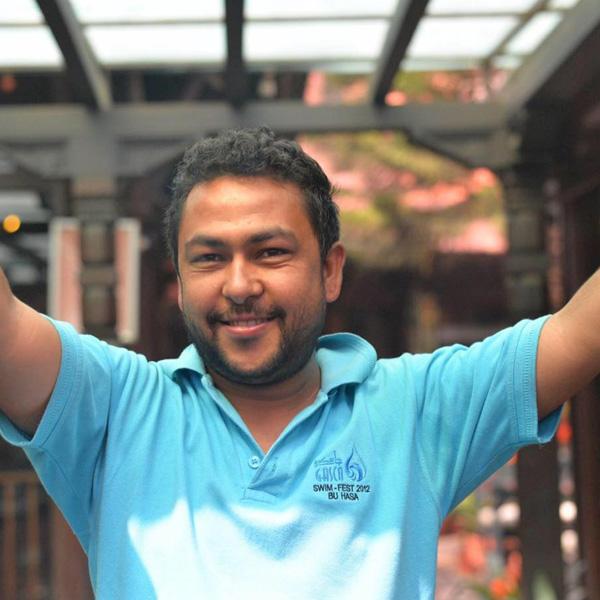
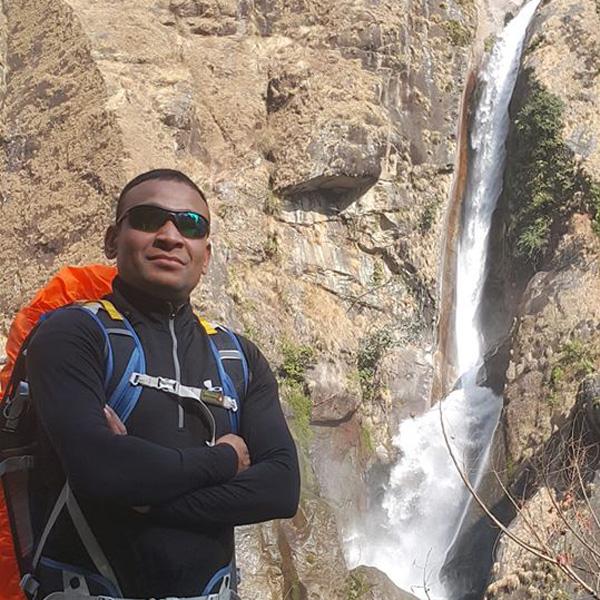
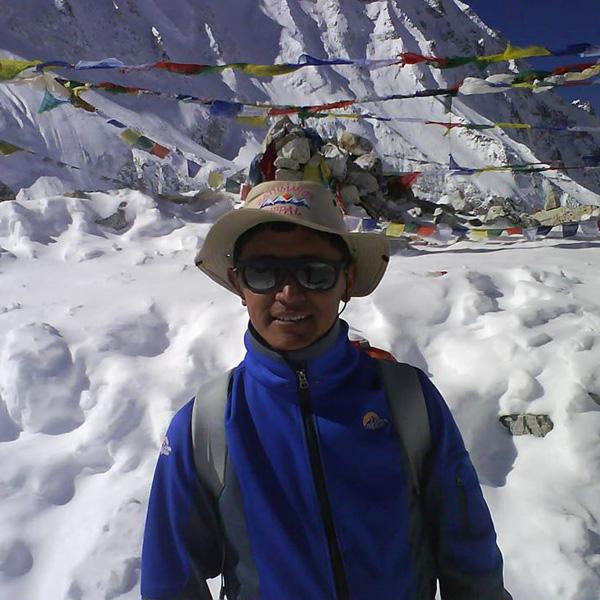
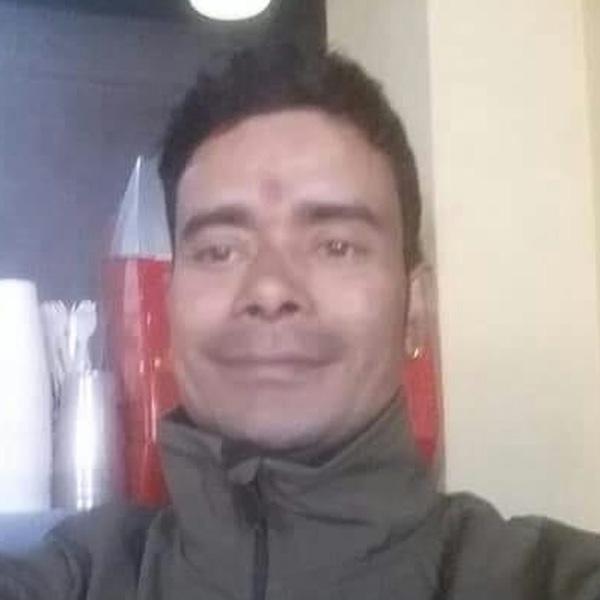
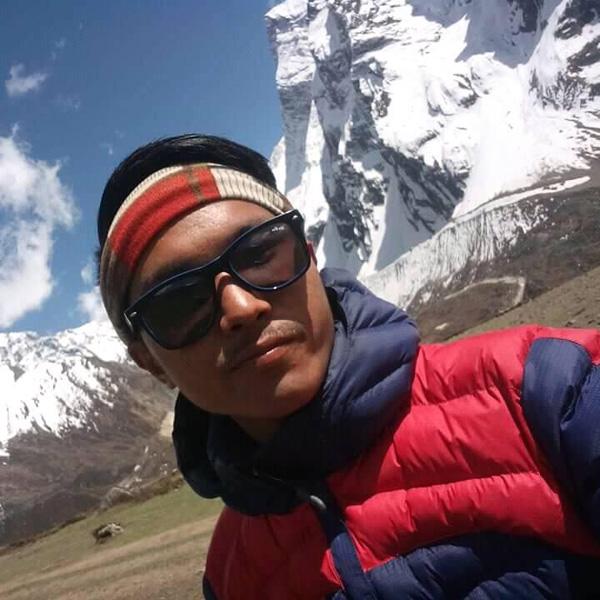
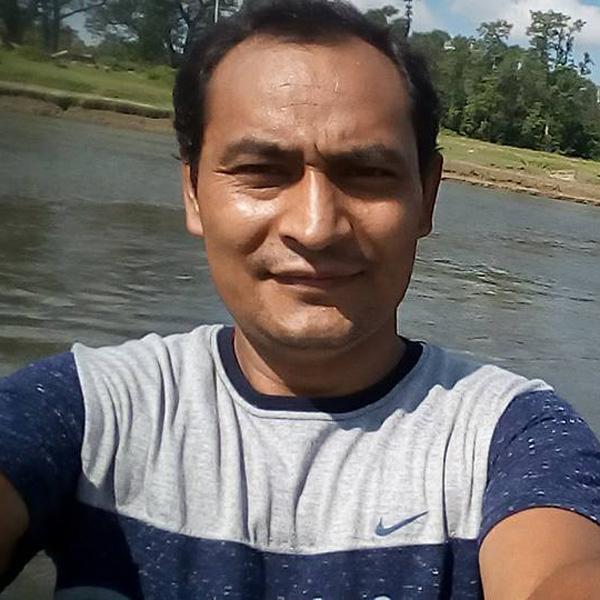
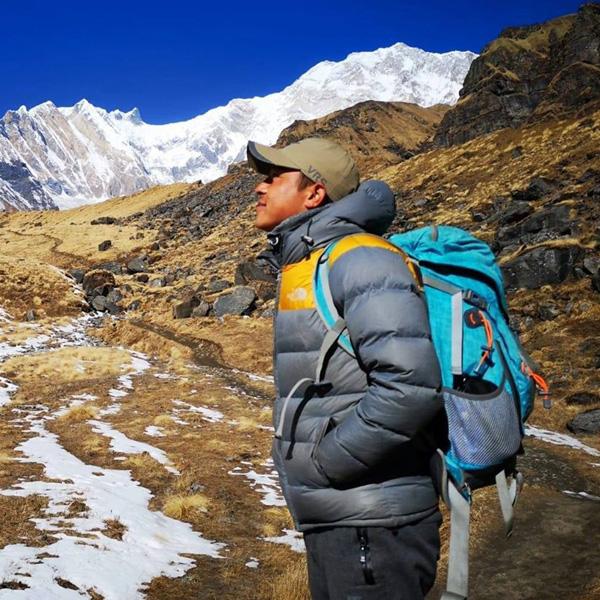
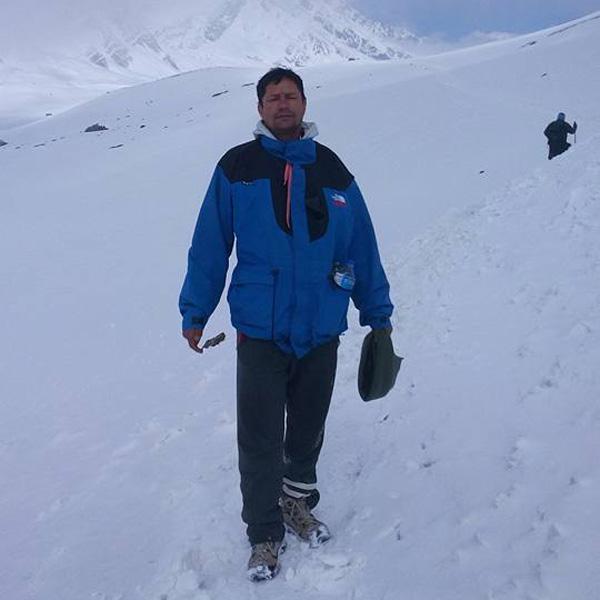
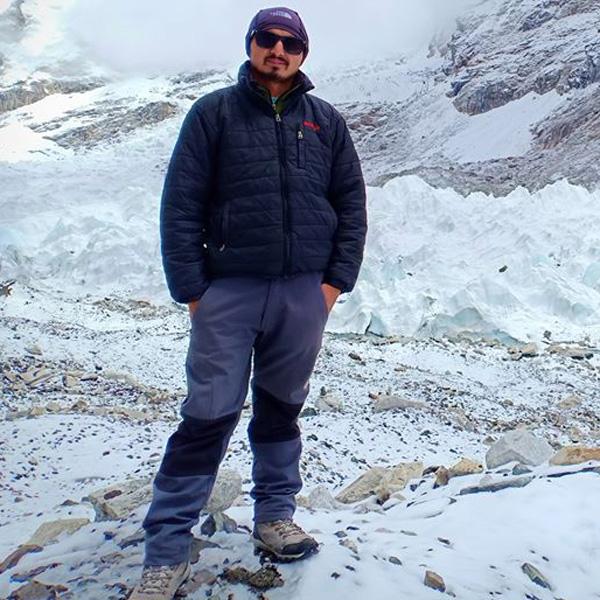
Client References
Write a Review
Trekking to ABC
Overall, we were happy and satisfied with the company and our guide, Dharma Subedi.
Amanda Kusumo, Jakarta - Indonesia
Annapurna Base Camp Trek
We had a great experience on this trek organised by Unique Adventures. From first contact they provided comprehensive and quick responses to our many queries. On arrival in Kathmandu we were met by our excellent guide Harka Tamang who took us to our hotel and then to the company office. Harka again collected us on Day 1 of the Trek and looked after us so well from start to finish. Harka had lots of interesting information to share with us and managed everything connected with our accommodation and meals. All in all Harka gave us a wonderful experience of trekking in Nepal.
Thomas Meehan and Wendy Moxley you, Ireland
A magical trip!
I’ve travelled and worked all over the world, and this trip has definitely been a huge highlight of my life. Everything was planned brilliantly, and our guide and porters were so kind, friendly, efficient and just amazing. The trip itself was spectacular, the scenery beautiful and the culture mesmerizing. While in Nepal, there was a snow in, in a different region, and Khum worked tirelessly to organizer helicopters and get the trekkers out, with huge success. You can feel that you are in safe hands when dealing with this company. I will definitely be back to Nepal to visit again, and will definitely use Khum and Unique Adventures.
Carol Butland, Fremantle, Australia
Amazing experience
Thank for all. Experience incredible. If you want to discover all Nepal and feel energy in this country this is best plan for you. Staff very professional and friendly. Best agency in Nepal !
Thomas Langeron, 67 rue jacoulet
Great experience with Annapurna Base Camp Trek
That was my first trip to Nepal and I was very impressed with the way they do tourism in Nepal through our trekking Annapurna Base Camp, organized by Unique Adventure. Guides and Porters are what made the success of the trip, they are very experienced, friendly and super-helpful, they always expressed positive energy. Chhiyang was my guide, he is very warm, kind and always offered extra support. All the tea houses in our trip are clean and well-organized. I was very happy with food in the trek, food was very nice, there are many options, from local Nepali food to and western food.
Ha Ngoc, Hanoi - Vietnam
Amazing ABC trekking tour
I really enjoy the trip and tour arranged by UNIQUE ADVENTURE. First, the price is really nice compare to others. At the same time, the service they provided is amazing. The manager, staffs and the guide they provided can speak English fluently and they explained everything clearly. I went to ABC trekking with them. The trip was amazing, and their service definitely improve the whole quality of the experience. I love to find them again.
Jeffe
Best trip ever
I travelled to Nepal and Tibet a few years ago and Khum was brilliant at organising our trip. It was tailored for us and he accommodated everything we wanted to do. All our guides and porters were absolutely brilliant. We also watched Khum hard at work organising helicopters when in another area of Nepal trekkers became stranded. He did a superb job of keeping everyone safe. The fact he has been operating his business for so long shows how professional he is. I am organising another trip back and he is making the process so easy. There was no question about going back and using Unique Adventures and Khum again.
Carol Sule, Perth, AustraliaJoin the Similar Trip 2024
